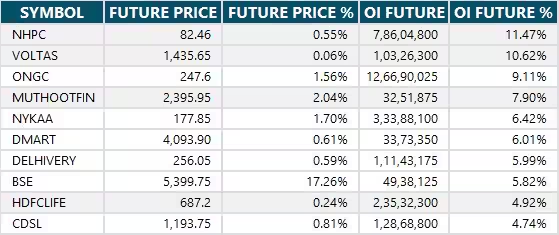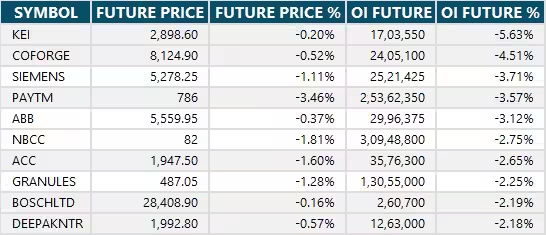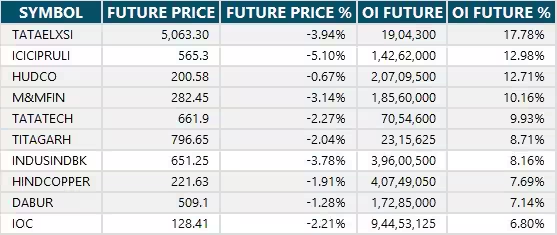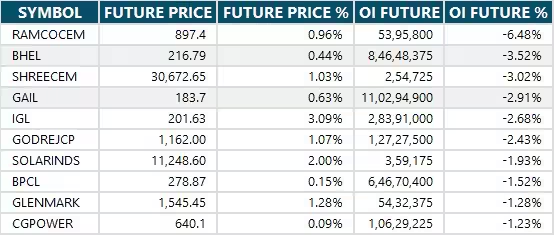01 Apr , 2025 By : Debdeep Gupta

The benchmark Nifty 50 started off the April series on a negative note, falling by a third of a percent on March 28. However, it still sustained above all key moving averages, with short- and medium-term moving averages trending upward, which is a positive sign. Considering the expectations of fresh tariff announcements by Donald Trump this week, the index may consolidate further, with support at the 23,400–23,300 range in the upcoming sessions. Below this level, sharp selling pressure may be possible. However, in the event of a rebound, it may face a hurdle at the 23,800 zone, according to experts.
Here are 15 data points we have collated to help you spot profitable trades:
1) Key Levels For The Nifty 50 (23,519)
Resistance based on pivot points: 23,616, 23,663, and 23,739
Support based on pivot points: 23,464, 23,417, and 23,341
Special Formation: The Nifty 50 formed a bearish candle with upper and lower shadows on the daily charts, indicating some volatility. The last two candles resemble a Tweezer Top pattern (not a classical one), which is a bearish reversal pattern, though confirmation will be seen in the following session. The momentum indicators show that the RSI (Relative Strength Index) is still above the 60 zone at 64.13, and the MACD remains above the zero line with a positive bias.
2) Key Levels For The Bank Nifty (51,565)
Resistance based on pivot points: 51,772, 51,891, and 52,084
Support based on pivot points: 51,387, 51,269, and 51,076
Resistance based on Fibonacci retracement: 51,883, 53,020
Support based on Fibonacci retracement: 50,273, 49,283
Special Formation: The Bank Nifty formed a Doji-like candlestick pattern on the daily timeframe, indicating indecision among buyers and sellers. The index traded well above all key moving averages (5, 10, 20, 50, 100, and 200-day EMAs) and near the upper end of the Bollinger Bands, with a positive bias in momentum indicators. It was down just 11 points on Friday. For the week, the index gained nearly 1.92 percent, with above-average volumes, and formed a bullish candlestick pattern with an upper shadow on the weekly timeframe, while maintaining a higher highs-higher lows formation.
3) Nifty Call Options Data
According to the weekly options data, the 24,500 strike holds the maximum Call open interest (with 92.73 lakh contracts). This level can act as a key resistance for the Nifty in the short term. It was followed by the 24,000 strike (81.89 lakh contracts), and the 23,800 strike (64.14 lakh contracts).
Maximum Call writing was observed at the 24,000 strike, which saw an addition of 37.5 lakh contracts, followed by the 23,600 and 23,800 strikes, which added 30.76 lakh and 30.38 lakh contracts, respectively. The maximum Call unwinding was seen at the 23,200 strike, which shed 1.07 lakh contracts, followed by the 22,800 and 22,700 strikes, which shed 95,100 and 33,375 contracts, respectively.
4) Nifty Put Options Data
On the Put side, the maximum Put open interest was seen at the 23,500 strike (with 62.05 lakh contracts), which can act as a key support level for the Nifty. It was followed by the 23,000 strike (53.08 lakh contracts) and the 22,800 strike (42.88 lakh contracts).
The maximum Put writing was placed at the 23,500 strike, which saw an addition of 21.56 lakh contracts, followed by the 22,700 and 23,300 strikes, which added 18.91 lakh and 17.61 lakh contracts, respectively. The maximum Put unwinding was seen at the 23,600 strike, which shed 7.51 lakh contracts, followed by the 23,800 and 23,700 strikes, which shed 4.8 lakh and 4.26 lakh contracts, respectively.
5) Bank Nifty Call Options Data
According to the monthly options data, the maximum Call open interest was seen at the 53,000 strike, with 12.87 lakh contracts. This can act as a key resistance level for the index in the short term. It was followed by the 52,000 strike (9.55 lakh contracts) and the 51,500 strike (6.72 lakh contracts).
Maximum Call writing was visible at the 53,000 strike (with the addition of 1.77 lakh contracts), followed by the 52,000 strike (1.43 lakh contracts) and the 52,500 strike (1.35 lakh contracts). The maximum Call unwinding was seen at the 51,000 strike, which shed 21,690 contracts, followed by the 50,000 and 50,500 strikes, which shed 12,480 and 8,580 contracts, respectively.
6) Bank Nifty Put Options Data
On the Put side, the 53,000 strike holds the maximum Put open interest (with 12.54 lakh contracts), which can act as a key level for the index. This was followed by the 50,000 strike (9.76 lakh contracts) and the 51,000 strike (9.17 lakh contracts).
The maximum Put writing was observed at the 51,500 strike (which added 1.76 lakh contracts), followed by the 51,000 strike (85,350 contracts) and the 51,700 strike (61,470 contracts). The maximum Put unwinding was seen at the 52,400 strike, which shed 59,400 strike, followed by the 50,500 and 52,000 strikes, which shed 20,730 and 17,520 contracts, respectively.
7) Funds Flow (Rs crore)

8) Put-Call Ratio
The Nifty Put-Call ratio (PCR), which indicates the mood of the market, fell to 0.92 on March 28, against 1.01 in the previous session.
The increasing PCR, or being higher than 0.7 or surpassing 1, means traders are selling more Put options than Call options, which generally indicates the firming up of a bullish sentiment in the market. If the ratio falls below 0.7 or moves towards 0.5, then it indicates selling in Calls is higher than selling in Puts, reflecting a bearish mood in the market.
9) India VIX
The India VIX, the fear index that measures expected market volatility, dropped further to 12.72, down by 4.38 percent, making the trend more favourable for bulls. The VIX has been down for four consecutive sessions.
10) Long Build-up (36 Stocks)
A long build-up was seen in 36 stocks. An increase in open interest (OI) and price indicates a build-up of long positions.

11) Long Unwinding (52 Stocks)
52 stocks saw a decline in open interest (OI) along with a fall in price, indicating long unwinding.

12) Short Build-up (112 Stocks)
112 stocks saw an increase in OI along with a fall in price, indicating a build-up of short positions.

13) Short-Covering (17 Stocks)
17 stocks saw short-covering, meaning a decrease in OI, along with a price increase.

14) High Delivery Trades
Here are the stocks that saw a high share of delivery trades. A high share of delivery reflects investing (as opposed to trading) interest in a stock.

15) Stocks Under F&O Ban
Securities banned under the F&O segment include companies where derivative contracts cross 95 percent of the market-wide position limit.
Stocks added to F&O ban: Nil
Stocks retained in F&O ban: Nil
Stocks removed from F&O ban: Nil
0 Comment